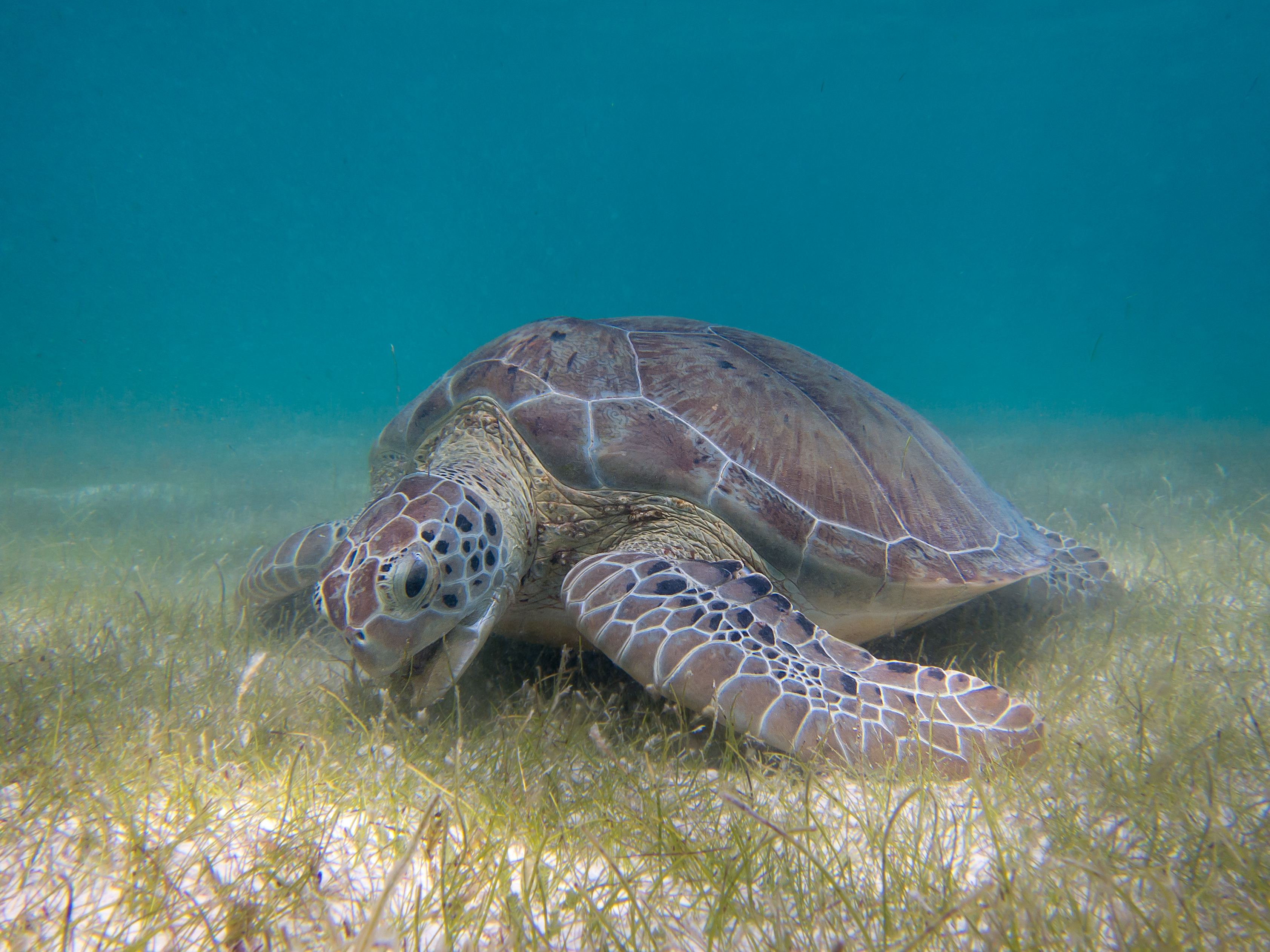Why Turtles?
You might be wondering: why turtles? Well, like just about every other species, they play a certain role in their environment that would be disrupted if any population became extinct–an outcome that’s very possible at this point.
There are seven species of sea turtles onewide. Some, like the Green sea turtle, eat grasses. These ocean grazers (along with manatees) play an important in spreading ocean grass habitat. Because Green turtles cut ocean grass short, it expands across the ocean floor rather than growing up to the surface–creating more habitat for animals that dwell within the sea grass bed.
All sea turtles lay their eggs in the sand of beaches. Sea Turtle Conservancy estimates turtles can lay as much as 150,000 lbs of eggs along a 20 mile stretch of Florida’s east coast. Because a majority of sea turtle eggs fail to make it out of the nest–due to embryonic development glitches, trapped hatchlings, empty eggs–the nests decompose and become valuable nutrients for the beach environment. Vegetation grows around nests and provides natural erosion control for the beach.
But why leatherback turtles? For one, hey’re the only species of sea turtle to eat primarily jellyfish, which partly keeps jellyfish populations in check. The turtles also provide an interesting evolutionary link to the past. The leatherback sea turtle is part of the genus Dermochelys, and is the only living species to share this designation. The turtle draws its evolutionary ancestry to 110 million years ago, and so represents a historical group of reptiles that have long been extinct. Studying the leatherback turtle may provide us with insight into these ancient species. Also importantly, leatherback turtles draw a decent amount of tourism to beaches they nest on, something that can have positive economic benefits for the humans in the area but can end up ironically negatively impacting the turtles themselves.
While the leatherback turtles’ Atlantic population levels are relatively steady, Pacific subpopulations have reached an alarmingly low level. Several threats have impacted sea turtle populations: egg poaching, harpooning, plastic marine pollution, commercial fishing accidents, and climate change. Conservation efforts are complicated by our relative lack of knowledge, and so conservation involves equal amounts of protection and research.
